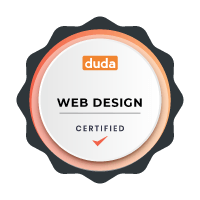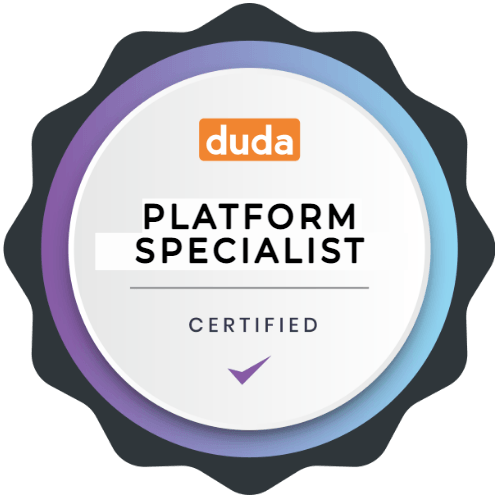Needing help with online marketing?
SEO Website Design Tips to Improve Your Rankings and Performance
Share this post
A good SEO-friendly website is not something that just happens overnight. It's about setting up your site in such a way that it ranks better and keeps visitors interested. From the ease of navigation to quick loading times, every little thing matters in how search engines and people see your site. If you didn't build your website with SEO in mind, you are totally missing out on visibility.
Want your site to move up the ranks? Ensure that your design becomes a win for the users and the search engines, too. To do that, you must learn some essentials to ensure your website pops and does better in SERPs.
Site Architecture: Why Good Structure Matters?
When it comes to achieving better rankings, website structure has a function beyond creating visual appeal. Structure helps search engines and users by making navigating a site and locating content easier, like using a roadmap.
SEO website design is highly relevant to the user experience (UX). Users find what they are looking for faster on sites that employ intuitive navigation. Through the UX, the structure influences key user metrics favored by Google. Bounce rates (BR) are low, and engagement is high, signaling that the site has value. This is how user experience affects SEO and the site’s ranking potential.
Google prefers to index well-structured sites. A straightforward website architecture enhances crawlability and stretches the crawl budget. With well-positioned internal links, they can work faster and with greater accuracy. It ensures no content is missed, improving indexing for better ranking.

A good SEO-friendly website is not something that just happens overnight. It's about setting up your site in such a way that it ranks better and keeps visitors interested. From the ease of navigation to quick loading times, every little thing matters in how search engines and people see your site. If you didn't build your website with SEO in mind, you are totally missing out on visibility.
Want your site to move up the ranks? Ensure that your design becomes a win for the users and the search engines, too. To do that, you must learn some essentials to ensure your website pops and does better in SERPs.
Site Architecture: Why Good Structure Matters?
When it comes to achieving better rankings, website structure has a function beyond creating visual appeal. Structure helps search engines and users by making navigating a site and locating content easier, like using a roadmap.
SEO website design is highly relevant to the user experience (UX). Users find what they are looking for faster on sites that employ intuitive navigation. Through the UX, the structure influences key user metrics favored by Google. Bounce rates (BR) are low, and engagement is high, signaling that the site has value. This is how user experience affects SEO and the site’s ranking potential.
Google prefers to index well-structured sites. A straightforward website architecture enhances crawlability and stretches the crawl budget. With well-positioned internal links, they can work faster and with greater accuracy. It ensures no content is missed, improving indexing for better ranking.
Prioritizing Mobile-First Design
Mobile searches make up 58% of all global web traffic. It’s a user habit that is increasing exponentially. Google, the largest search engine, now prioritizes searches initiated from mobiles. Its bots are primed for mobile-responsive sites and designed to function on small-screen devices.
But how do you know if your mobile optimizations are actually working? That’s where a
keyword ranking checker comes in. The tool helps you track a website’s performance across search engines; in fact, this tool helps analyze how your keywords perform in mobile search results.
If your site loads quickly, has clear, tappable buttons, and offers intuitive navigation, a Keyword Rank Checker will also confirm your rankings getting better over time. You can return to the drawing board and adjust your strategy if something's amiss.
Navigation: Optimizing for Search Engines
There are two reasons to optimize navigation. It enhances the UX and sends strong ranking signals to search engines like Google. Google’s algorithm prioritizes sites that are easy to navigate for crawling and indexing.
The first step to optimal navigation is creating a hierarchical structure. This should take the conventional form, working out from the homepage and dividing the site into primary categories, then subcategories, and specific content. The aim is to have content no more than three clicks from the homepage.
Instead of generic labels such as Products or Services, SEO friendly descriptive anchor text should be added. The text should reflect the page’s content so that it helps users and search engines understand what the page is about. Sites particularly heavy on content should consider adding a breadcrumb trail of links that go back to the homepage.

Implementing SEO-friendly URLs
SEO-friendly URLs are a critical element of UX optimization. Sites that use them tend to rank higher. They provide additional information about a page, helping Google’s AI understand it.
Here’s how to Implement SEO-friendly URL Structures:
- Short descriptive URLs are more effective. URLs with just one or two words tend to perform better for ranking.
- They should use hyphens, not dashes or underscores. Rather than spaces, Google uses hyphens to separate words.
- Special characters confuse Google and its users and should be avoided.
- The URL should have a logical structure reflecting the page’s position in the site’s hierarchy.
Descriptive URLs contribute to accurate indexing and UX and are vital for SEO web design.
Leveraging Header Tags for Content Hierarchy
Like descriptive URLs, header tags provide additional information that helps users and search engines. They organize and structure the content by dividing it into digestible chunks. Each heading provides context, making it easier to understand and index.
Header tags must follow the traditional H1, H2, and H3 conventions to effectively index. The H1 tag should signal the primary topic, H2 its subcategories, H3 and so forth, and other supporting details.
Header tags are a key feature of SEO friendly website hierarchy. Although they have to be short and to the point, they represent a crucial opportunity to use the site’s keywords.
Leveraging a site’s header tags is an effective SEO strategy for improving ranking. They also deserve your attention because they contribute to UX and influence bounce rates.
Optimizing Images and Multimedia
Optimizing images and multimedia often gets overlooked, yet videos, images, and infographics enhance user engagement. Consequently, optimized visual elements help websites perform better in SERPs, especially Google.
Search engines don’t ‘see’ images. Instead, to understand them, they rely on the descriptive data that’s attached to them. It’s usually presented as alt text but also as file names. The description provides the search engines with additional context about the content. This is why SEO web pages optimize their visual elements as well as their URLs.
Optimizing a site’s visual elements is an essential component of SEO design. The strategy improves accessibility and page load times. According to Google, the length of time a page takes to load dramatically impacts BR. An increase in load speed from 1 second to 3 can push up the BR by 32%.
To optimize images and multimedia:
- use descriptive file names
- compress images
- add alt text
- optimize for small devices
- properly embed videos
Page Load Time and Performance: Optimizing for Speed
Google’s research concluded that 53% of mobile users abandon sites when they take longer than 3 seconds to load. Search engines prioritize ranking these SEO web-ready sites because they are optimized to deliver a quick, seamless user experience coupled with a mobile-first design.
The higher engagement and more users stay longer, and consequently, a low BR sends positive signals to search engines, increasing the likelihood of ranking well.
To improve page speed and performance, use:
- tools like Tiny PNG or JPEGmini to compress images
- external hosting
- a content delivery network (CDN)
- browser caching
- minified HTML, CSS, and JavaScript
Enhancing Internal Linking for an Impact
Enhance your internal links. They might appear straightforward, but their impact can be pretty significant. Why? Simple: they contribute to the ability of search engines to understand the structure of your website and the relative importance of different pages of your site. Thus, when you link one site page to another, you essentially provide Google with a pointer to other important pages.
A proper internal linking strategy ensures that “link equity” or “ranking power” is spread evenly throughout the site pages. Also, internal links make it extremely easy for users to navigate the site, so users will spend more time on the website. And guess what? More time spent on the website translates to more search engine optimization value.
To optimize this, always include relevant anchor text, which is part of the link the user clicks on and explains the topic of that page to the user and search engines. But of course, don’t overdo it. Too many internal links can confuse visitors and make your pages appear too cluttered.
Also, organically structure your links rather than making them look obtrusive to the readers. In fact, internal linking should actually make readers feel as though they’re getting the next piece of your content.
Focusing on Improving User Experience
Creating a website with fun and interactive stuff can really boost the user engagement game, and that's super important for SEO rankings. Google totally digs websites that keep people interested because it shows that the content is good and deserves a higher spot in SERPs.
To improve user experience and interaction, you can try things like quizzes, calculators, sliders, and cool animations. The more they stay on it, the more Google will learn about the relevance of your content.
For instance, if your site is an e-commerce site, inserting an interactive tool for recommending products helps users find what they need. It personalizes their experience, making them more likely to explore other pages or complete a purchase. These interactions aren't just fun – they directly lead to more extended site visits and lower bounce rates, boosting SEO.
Conclusion
An SEO-friendly website is more than just content optimized for search engines. From well-structured site architecture and mobile-first design to optimized navigation and engaging interactive elements, every web design decision impacts user experience and SEO rankings.
A thoughtful approach to design not only enhances how users interact with your site but also sends positive signals to search engines, guaranteeing long-term success.
About Social Space
Hey there, I'm Robert Tickner!
I’m an online visibility consultant who helps local small businesses get noticed on Google search, guiding them on their digital journey for growth. I build websites with structured web design practices through SEO services that get noticed on Google's search algorithms, write the occasional blog, and boost Google Business Profile listings to improve overall traffic that helps convert more potential clients to your website.
I'm determined to grow my business.
My only question, is it time to boost yours?




